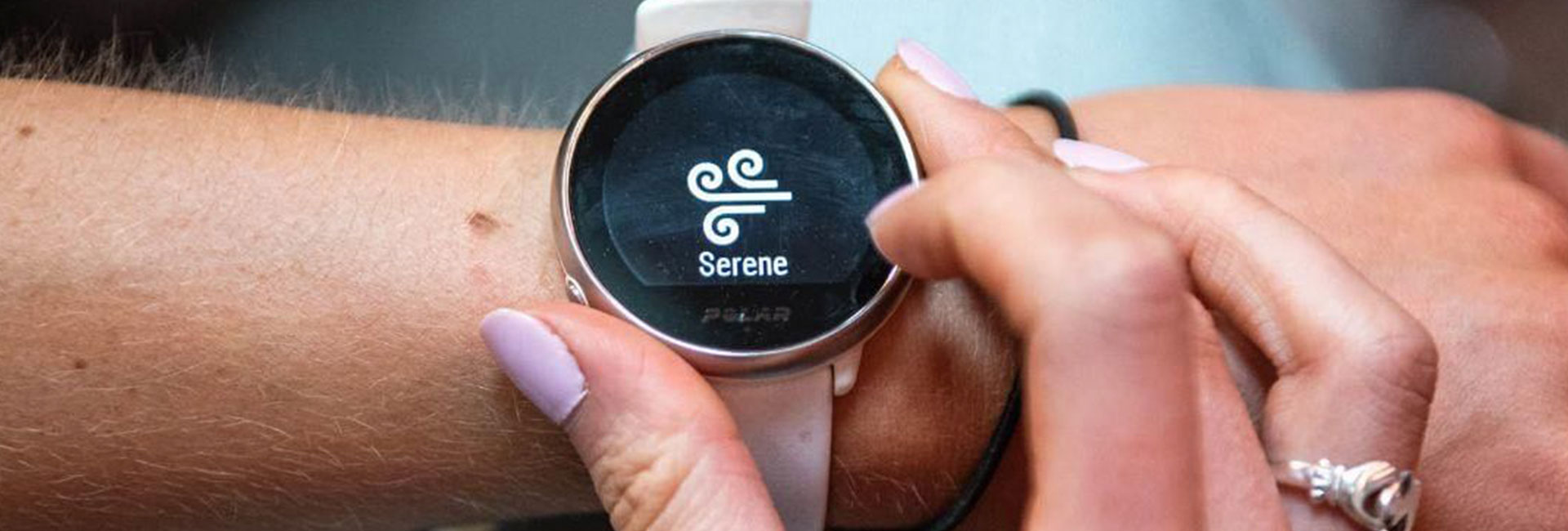Breathing is a simple, but proven, way to relieve stress, boost recovery and help with your workout, but not just any breathing. To work its magic, it needs to be the “right” kind of breathing, but what exactly does that mean?
Deep breathing is a technique that, if applied regularly, can help build resilience, reduce stress and improve sleep and overall well-being. That’s because breathing is a way to tap into your parasympathetic nervous system that helps lower heart rate and relax physically and mentally. The parasympathetic nervous system is your “calm and chill” system that you can access with elongated inhale and exhale cycles with very slow and long breaths.
To drive home the point, we brought in four experts to shed light on why breathing matters and how to breathe “right”.
Here we dive into the benefits of optimal breathing in stress relief and recovery with:
- Dr. Caitlin Glenn Sapp, a USA Triathlon Certified Coach, ACSM Personal Trainer and Doctor of Physical Therapy (DPT)
- George M. Dallam, Ph.D., professor in the Department of Exercise Science, Health Promotion and Recreation at Colorado State University – Pueblo
- Dean Somerset, BSc. Kinesiology, a certified exercise physiologist, and certified strength and conditioning specialist
- Stew Smith, a strength and conditioning specialist (CSCS), military fitness trainer and former Navy SEAL
What happens in the body and mind when you breathe “wrong”?
Caitlin Glenn: Breathing shallowly, quickly and orally will cause your nervous system to be in a hyperarousal state, not allowing you to relax nor recover properly. This hyperarousal state keeps your body in the “fight” response of our sympathetic nervous system, which increases heart rate, sweating and gets you amped up.
Our breathing pattern regulates physical and emotional states. Over-breathing leads to anxiety due to the nervous system being in an active state and causes you to use accessory muscles for breathing. This can lead to shoulder pain, chest tightness, and headaches.
What happens in the body and mind when you breathe “right”?
Stew Smith: Breathing deeply, slowly, and steadily reduces anxiety, fear, and allows you to recover better from stress as well as intense physical activity.
Dean Somerset: Naturally, “right” depends on what you’re trying to do. If you’re trying to relax and recover from stress or working out, long breathing cycles will decrease your heart rate and breathing rate and you’ll feel a sense of calm and relaxation compared to faster and more shallow breathing. There are also a lot of hormonal benefits geared towards relaxation that come with this type of breathing.
George Dallam: Operationally, in my mind, breathing “right” means breathing nasally, whenever possible — including during exercise. The established benefits of doing so are improved filtration, humidification and temperature regulation of the air you breathe in so as to minimize damage to the lung. Nasal breathing increases the release of nitric oxide, the most potent vasodilator in the body, and subsequently is likely to improve coronary artery blood flow during exercise, although this has also not yet been studied directly.
What’s a good breathing technique to reduce stress?
Dean Somerset: Find a quiet place where you can focus on just your breathing without a bunch of distractions. A good drill to practice proper breathing technique is to lay on your back, and breathe in and out through your nose with the tongue resting on the roof of your mouth.
- Inhale without moving the spine into extension or using neck muscles. Focus on slow inhales lasting at least four seconds.
- Exhale by just letting the air in your lungs escape slowly and without effort for at least four seconds.
- Be sure to pause between breaths.
- Try to complete 10 to 15 breaths, which would take about one to two minutes, and see how you feel.
Stew Smith: There are many ways to breathe deeply, but I recommend to start out with simple box breathing or two-to-one breathing.
Box breathing is done by inhaling for four seconds, holding for four seconds, exhaling for four seconds and holding for four seconds. If you prefer something a little less rigid, try inhaling to a three- to four-second count in your nose, and exhale through your mouth six to eight seconds.
Is there one generic or several different breathing techniques to boost recovery?
Caitlin Glenn: Normal breathing is described as diaphragmatic breathing with synchronized motion of the upper rib cage, lower rib cage and abdomen. The normal breathing rate has been identified as 10 to 14 times per minute, or 21,000 times per day. Nasal breathing is the preferred pattern at rest with the inhalation phase shorter than exhalation. In active recovery sessions, you can use a mix of nasal and mouth breathing.
Dean Somerset: Many disciplines of yoga, tai chi or meditative breathing promote their own specific means, all working towards similar parasympathetic stimulation, but also just adjusting for the specific goals they set out. They may involve different postures or movements as well, but they are all beneficial if you enjoy them and see specific benefits from their practice.
Reading tip from Stew Smith:
Patrick McKeown’s book titled the Oxygen Advantage describes breathing that helps with not only recovery, but also athletic performance.
What is the proper way to breathe during exercise?
George Dallam: Both anxiety and physical exertion increase our production of CO2, so opening your mouth to breathe helps to feel more comfortable in these conditions.
Unfortunately, the more we do so, the more sensitive to CO2 increases we become through a process of down regulation of our receptors for CO2. This is similar to the “tolerance” effect of alcohol or caffeine for instance.
By doing the opposite, increasing our tolerance for CO2, we can then become able to breathe nasally in all situations, even at VO2max. This is accomplished through a combination of breathing exercises, as described previously, and gradually increasing the intensity of work you can accomplish breathing nasally as air hunger gradually disappears.
Dean Somerset: Much of how to breathe during exercise depends on load or intensity. For higher intensity weight training, breathing will be fairly strained and may actually benefit from a big inhale, squeezing the breath, and then completing the work while holding the breath before releasing after the hardest portion of the rep.
For lower intensity exercise, breathing out through the exertion can be a common method. For cardio, like running, pulsed inhales and exhales timed with foot contacts are usually used as more of a timing and rhythm technique.
How Do You know if you’re breathing in a way that reduces stress and boosts recovery?
Stew Smith: You can take your pulse or use a heart rate monitor and notice your heart rate decrease significantly when you’re breathing correctly.
I’ve also noticed that when I breathe properly during activity, I have a lower heart rate at certain paces that were previously elevated when I wasn’t breathing deeply and rhythmically.
I also check my blood pressure and heart rate variability to see if I am relaxed and recovered.
My number one use for mindful breathing is prior to sleeping — to calm down and fall asleep faster. Our most efficient relaxation and recovery tool is a good night’s sleep, and breathing can help you relax when you’re trying to fall asleep.
Manage stress and calm your body and mind after a hard workout (or long day) with Serene™ Guided Breathing Exercise.
If you liked this post, don’t forget to share so that others can find it, too.
Or give it a thumbs up!
I like this article
Please note that the information provided in the Polar Blog articles cannot replace individual advice from health professionals. Please consult your physician before starting a new fitness program.





